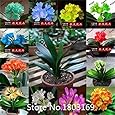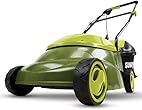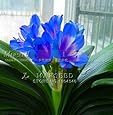
The name hydroponics suggests plants grown in water, and that method is used. But it really refers to any method of horticulture that doesn’t use soil, usually in a highly artificial setting. So, it’s sometimes called soil-less controlled environment agriculture.
Hydroponics offers many challenges, but has many benefits both to the plant and the gardener.
Water and nutrient control is more difficult. Light control is more important. pH adjustment is critical. In a soil-based garden, many of these factors are self-regulating, or mostly so. But in hydroponics, these need a little extra care from the gardener.
But hydroponics can actually yield larger fruits and larger output overall. More and larger plants can be produced in a smaller space, for a greater yield. That yield often comes with some efforts that are actually easier.
Weeding, for example, is much less of an issue in the typical hydroponic setup. The medium makes it hard for the weeds to get started and they’re easily out-competed or killed when they do.

To derive those benefits, the hydroponic setting has to be arranged, though.
One way to do that is by purchasing a complete hydroponic kit. Kits come with trays and tubing, nutrients, lights, air pumps and sometimes even seeds to get started.
They’re especially good for the novice because they package all the ‘ingredients’ needed to assemble a beginning hydroponic garden. Much of the knowledge needed to get started is incorporated in the kit.
But even a kit-housed hydroponic garden needs care. The right nutrients have to be fed to the plants. Even an automatic feeding system will need to be set up, filled and checked.
Automatic watering systems, like drip irrigation or under-the-tray tubing will need to be built or arranged. Components have to be monitored for fungi and cleaned or sterilized.
Pest and disease control is required in hydroponic gardens, just as they are in ‘ordinary’ ones. Constant moisture provides a fertile environment for bacteria, mildew and other harmful organisms.
White flies, aphids, spider mites, caterpillars and other common garden pests will still need to be dealt with.
Fortunately, there are numerous easy-to-use methods to tackle that problem. Insecticidal soaps, botanicals, fungicides and other compounds run the gamut from traditional 18th century methods which are still in wide use to chemicals fresh from the latest laboratory discoveries.
Hydroponics offers interesting variety, too. Some hydroponic gardeners prefer an all-water system.
Trays that hold roots and solutions are fitted with supports from which strings can hold an upright plant. Other gardeners enjoy working with rockwool, perlite, LECA and other highly useful hydroponic media.
Some gardeners incorporate all the above in a convenient greenhouse. That allows them to control the light, air, water and other factors much more easily than other settings. Many greenhouses are modular and can be expanded as the garden ‘grows’.
To get started using any method it’s helpful to have some knowledge of elementary botany. Plants have unique needs and hydroponics builds on that base. Knowing what factors they require to flourish will get the hydroponic gardener started off in the right direction.
Get started on your hydroponics garden today. It’s great fun!
For further information log on website :https://plantcaretoday.com/hydroponics-soil-less-plant-culture.html









No comments:
Post a Comment